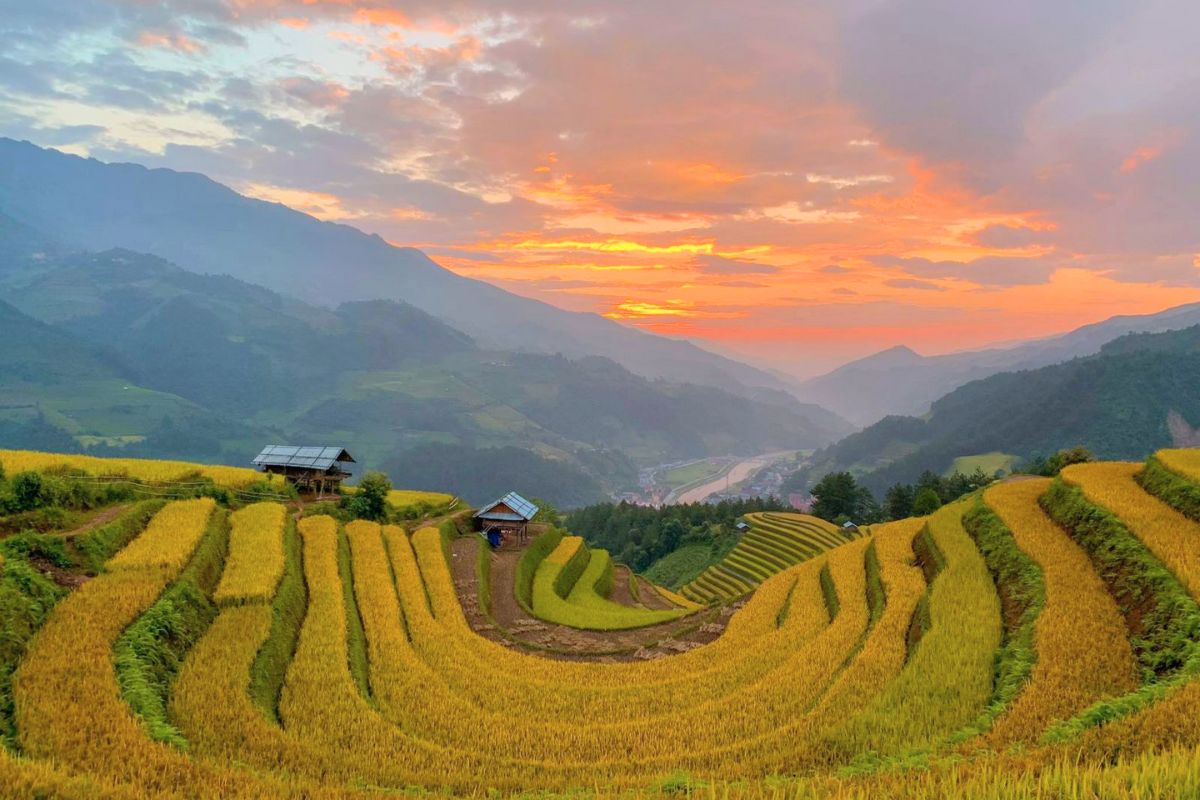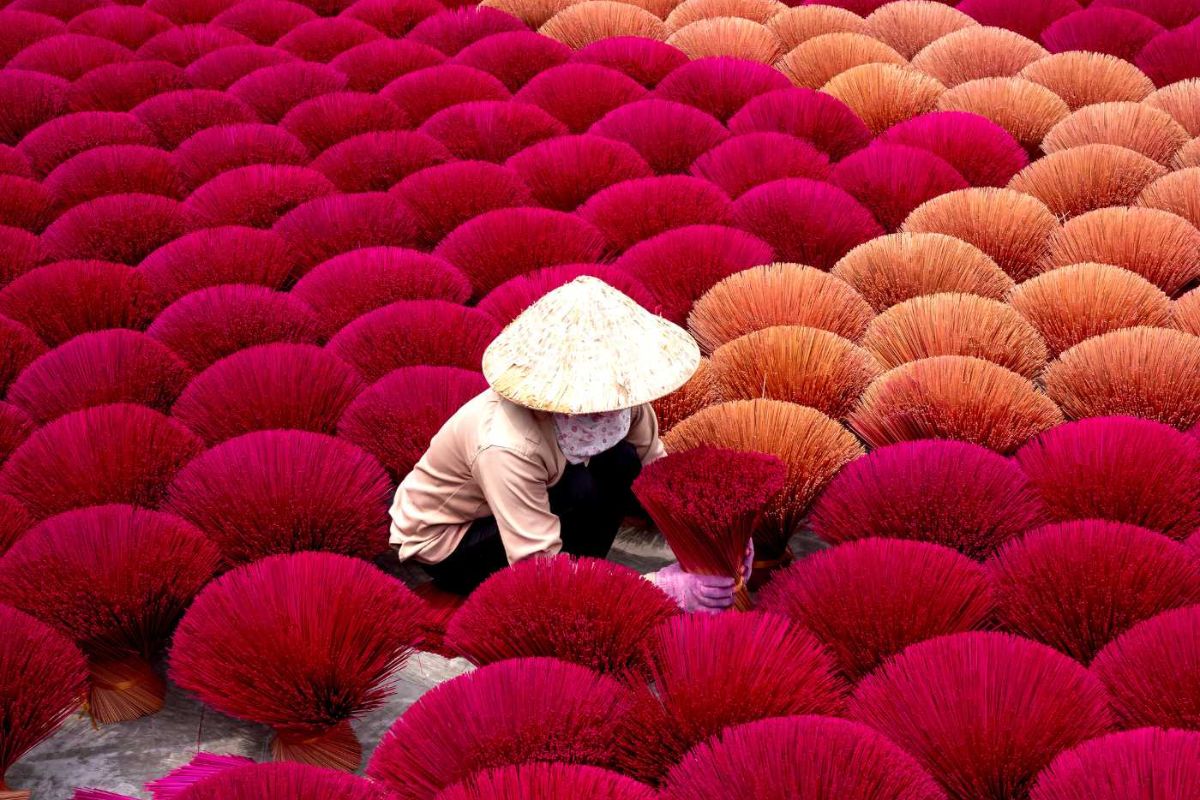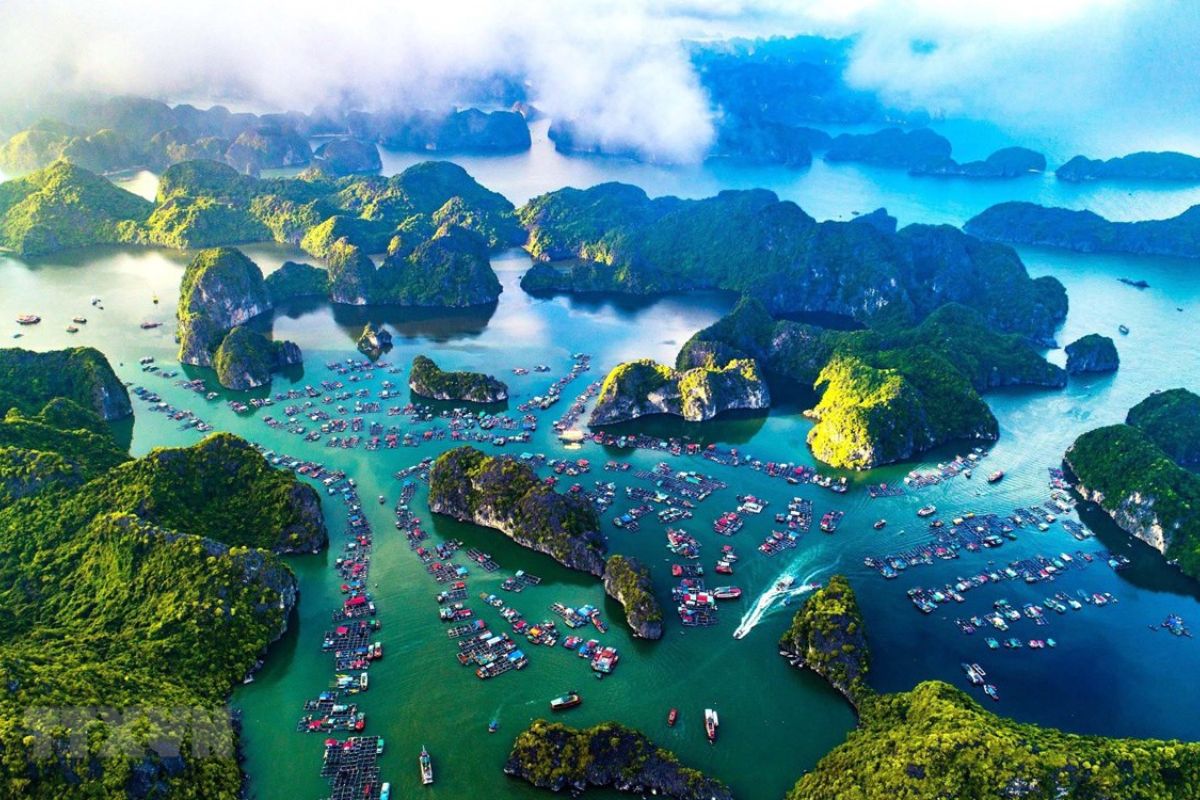Sapa, a picturesque town in the northern mountains of Vietnam, is a charming destination for many tourists around the world. As you prepare for your adventure in this enchanting region, one question likely looms large in your mind: “What should I wear to Sapa?” The answer is more complex than you might think, given Sapa’s unique climate and varied terrain. In this comprehensive guide, we’ll unravel of what to wear in Sapa, ensuring you’re prepared for every season and activity. Whether you’re planning a summer hike or a winter excursion, we’ve got you covered with essential tips and recommendations.
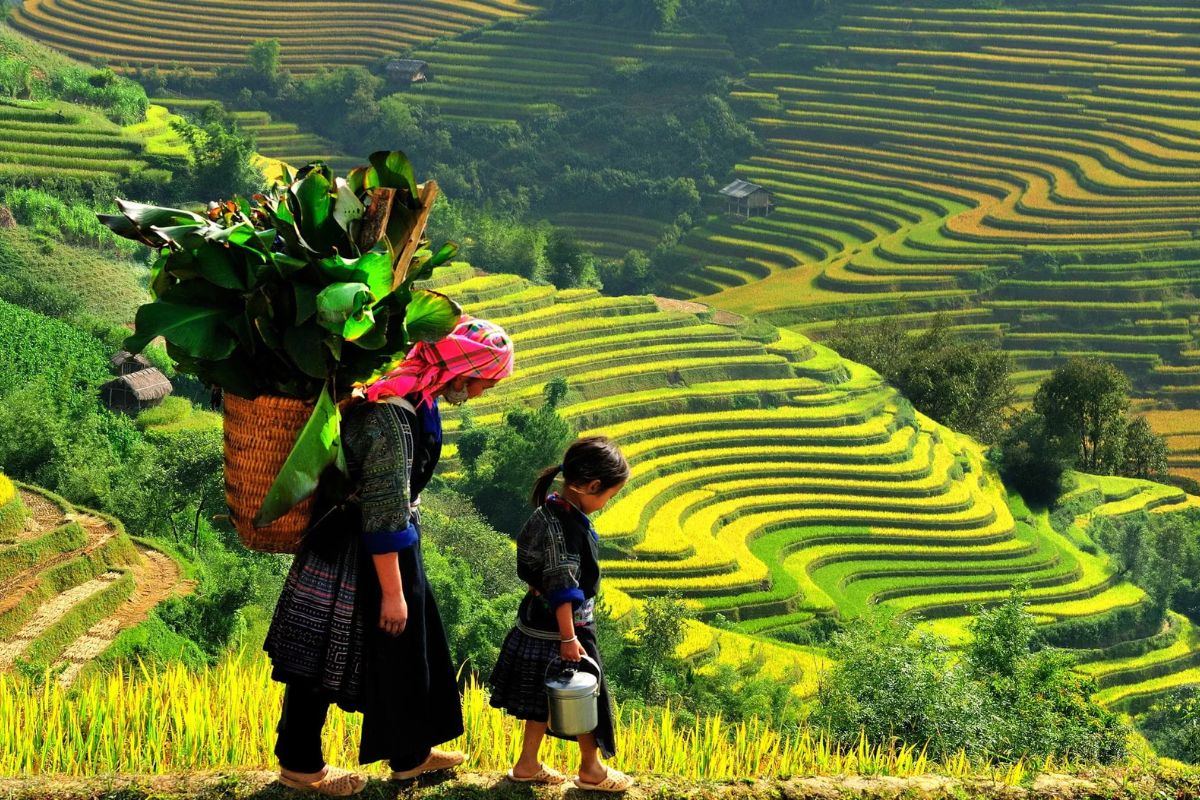
What to wear in Sapa for each season
What should I wear to Sapa in Spring
Spring in Sapa (March to May) is a time of renewal, with temperatures ranging from 15°C to 25°C (59°F to 77°F). The weather can be unpredictable, with occasional rain showers and misty mornings. When considering what to wear in Sapa during this season, layering is key.
Start with a breathable base layer, such as a moisture-wicking t-shirt or long-sleeved top. Add a light sweater or fleece for warmth, and don’t forget to pack a waterproof jacket to protect against unexpected showers. Comfortable, quick-drying pants or convertible trousers are ideal for spring hikes. A lightweight scarf can add an extra layer of warmth on cooler days and serve as protection against the sun when needed.
For footwear, opt for sturdy, waterproof hiking boots with good traction. The trails can be slippery due to lingering moisture, so proper footwear is essential. Remember to pack a few pairs of moisture-wicking socks to keep your feet dry and comfortable.
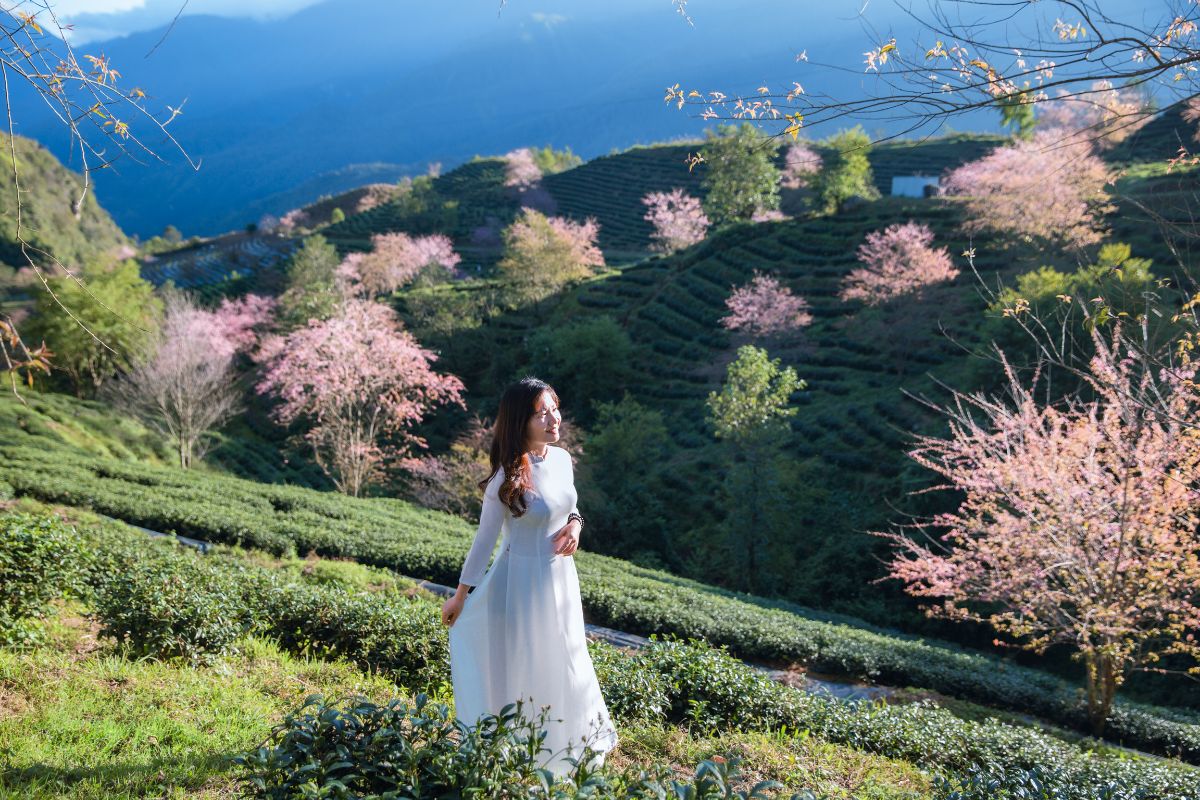
What should I wear to Sapa in Summer
Summer in Sapa (June to August) brings warmer temperatures, ranging from 20°C to 30°C (68°F to 86°F), but it’s also the rainy season. When deciding what to wear in Sapa during summer, focus on light, breathable fabrics that dry quickly.
Opt for lightweight, moisture-wicking shirts and shorts or pants made from quick-drying materials. While it may be tempting to wear shorts due to the warmer weather, long pants can provide better protection against sun, insects, and scratches from vegetation during treks. A good quality rain jacket is essential, as sudden downpours are common. Choose one that’s breathable to prevent overheating during humid conditions. Pack a few extra sets of clothes, as you may need to change more frequently due to perspiration or rain.
For footwear, waterproof hiking sandals can be a good option for less strenuous activities, offering breathability and quick-drying properties. However, for more challenging treks, stick with waterproof hiking boots to provide ankle support and protection against wet conditions.
Don’t forget to pack a sun hat, sunglasses, and high-SPF sunscreen. The sun can be intense at higher altitudes, even on cloudy days.
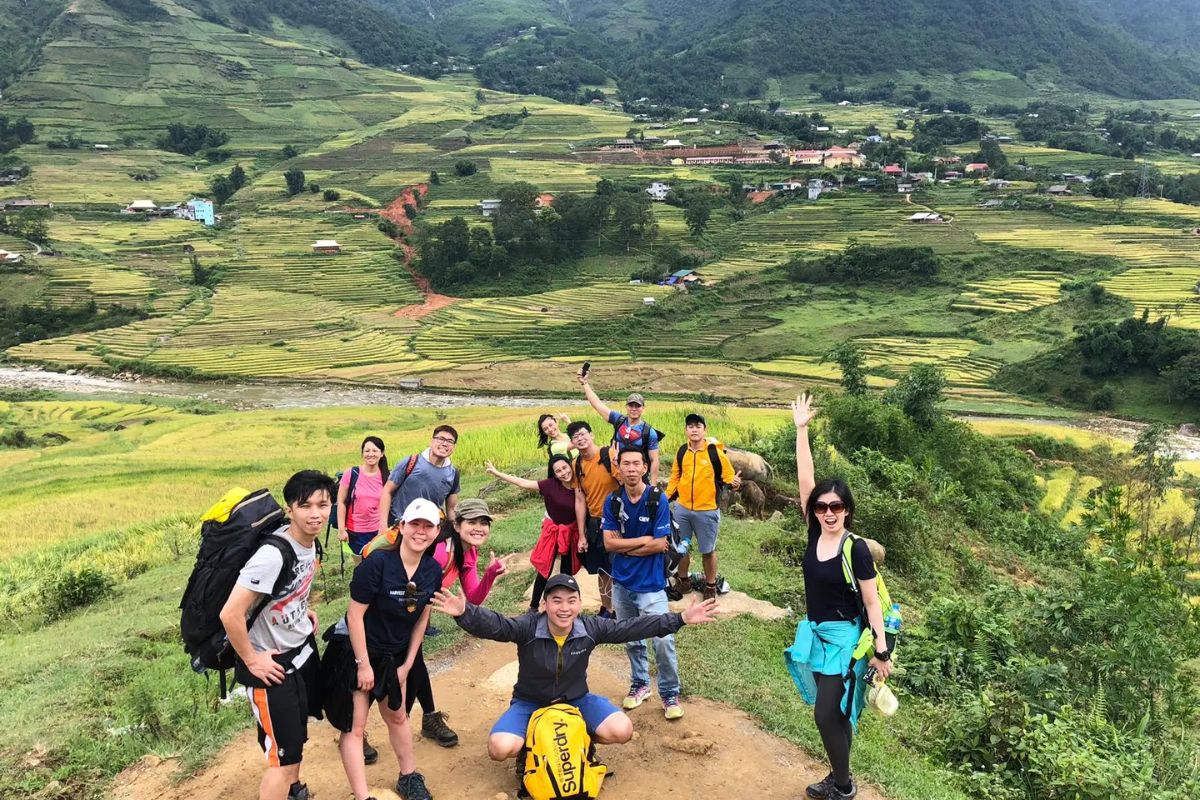
What should I wear to Sapa in Autumn
Autumn (September to November) is often considered the best time to visit Sapa, with pleasant temperatures ranging from 10°C to 20°C (50°F to 68°F) and clearer skies.
Layer your clothing with a light base layer, a warm mid-layer like a fleece or light sweater, and a waterproof outer layer. This combination allows you to adjust your clothing as temperatures fluctuate between cool mornings and warmer afternoons. Comfortable hiking pants or jeans are suitable for most activities. For colder days or early morning treks, thermal leggings worn under your pants can provide extra warmth.
Sturdy hiking boots remain the best footwear choice, providing support and comfort for long walks through Sapa’s stunning autumn landscapes. Pack warm socks to keep your feet cozy during cooler periods.
What should I wear to Sapa in Winter
Winter in Sapa (December to February) can be quite cold, with temperatures ranging from 3°C to 15°C (37°F to 59°F), and occasional frost or even snow at higher elevations. When considering what to wear in Sapa in December and throughout the winter months, warmth should be your top priority.
Start with a thermal base layer to trap body heat. Add a warm fleece or wool sweater as a mid-layer, and top it off with an insulated, waterproof jacket. Thermal leggings or long underwear worn under warm, water-resistant pants will keep your legs cozy during outdoor activities.

Proper footwear is crucial in winter. Insulated, waterproof hiking boots with good traction are essential for navigating potentially icy or muddy terrain. Thick, warm socks (preferably wool or synthetic materials) will help keep your feet warm and dry. Don’t forget to pack warm accessories. A thermal beanie or hat, insulated gloves, and a warm scarf or neck gaiter are must-haves. These items will protect you from the biting cold, especially during early morning treks or when visiting higher altitudes.
For those wondering what to wear in Sapa in December specifically, it’s worth noting that this is typically the coldest month. Extra layers, such as a down vest or an additional fleece, can provide added warmth without too much bulk.
What to wear in Sapa for activities
Trekking
Trekking is one of the most popular activities in Sapa, so what to wear in Sapa for trekking? Start with moisture-wicking base layers to keep sweat away from your skin. Choose quick-drying, breathable shirts and pants or shorts, depending on the weather. In cooler seasons, convertible pants that can be zipped off into shorts offer versatility.
Sturdy, broken-in hiking boots with good ankle support are essential for navigating Sapa’s varied terrain. Pair them with moisture-wicking socks to prevent blisters. Don’t forget to pack a lightweight, waterproof jacket for unexpected rain showers. A wide-brimmed hat and sunglasses will protect you from the sun, while a small backpack can carry extra layers, water, and snacks.
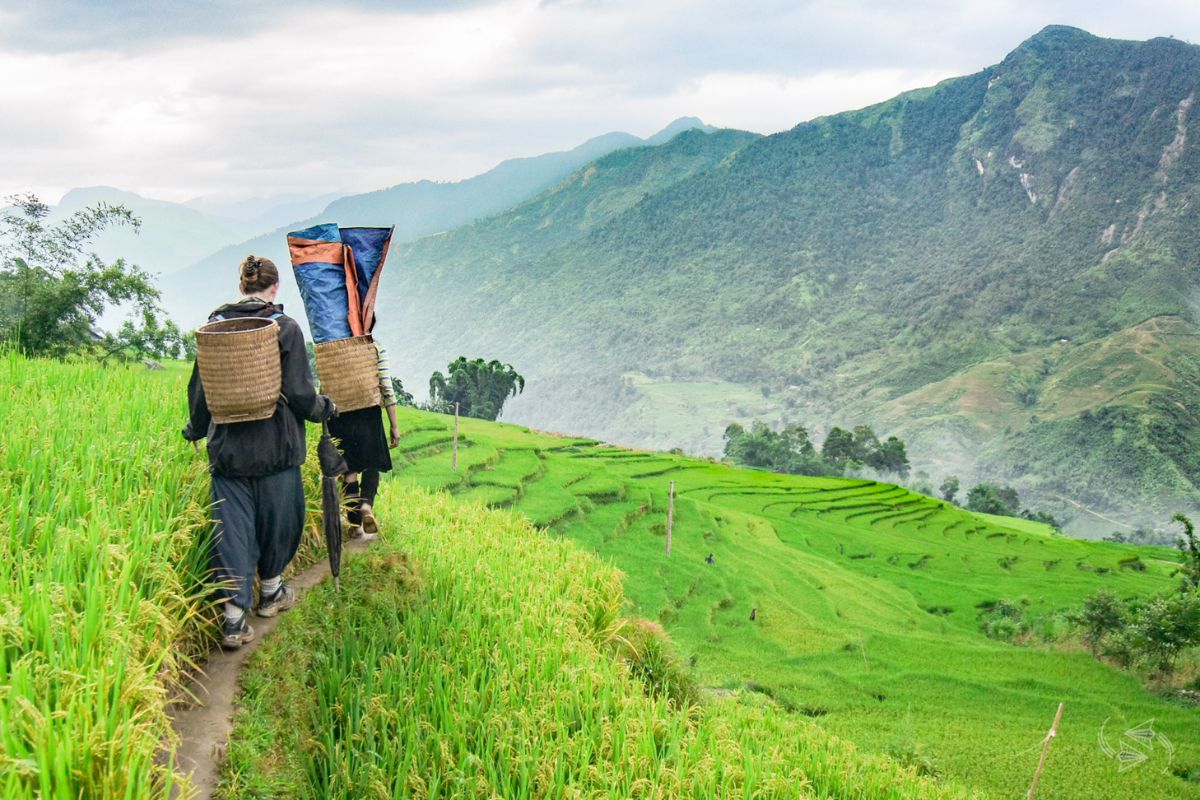
Admiring the terraced rice fields
Sapa’s iconic terraced rice fields are a sight to behold, and you’ll want to be comfortable as you take in the views. For this activity, comfortable, breathable clothing is key. Light, long-sleeved shirts and pants can protect you from the sun and insects. In warmer months, shorts or skirts with leggings can be suitable if you’re not planning on extensive hiking.
Sturdy walking shoes or hiking sandals are appropriate for easier paths, but if you plan to explore more rugged areas of the rice terraces, stick with hiking boots. A hat, sunglasses, and sunscreen with high SPF are essential, especially if you’ll be out during midday when the sun is strongest.
Exploring through ethnic villages
Visiting Sapa’s ethnic villages offers a unique cultural experience. Opt for modest clothing that covers your shoulders and knees. Comfortable walking shoes are a must, as you’ll likely be doing a fair amount of walking on uneven surfaces. In rainy seasons, waterproof shoes or sandals can be helpful.
You can also try on some traditional outfits of the ethnic minorities in Sapa. These vibrant, colorful garments are handmade by the local people and hold cultural significance for each ethnic group. This experience is really fun as it allows you to become like a local and capture these memorable moments.
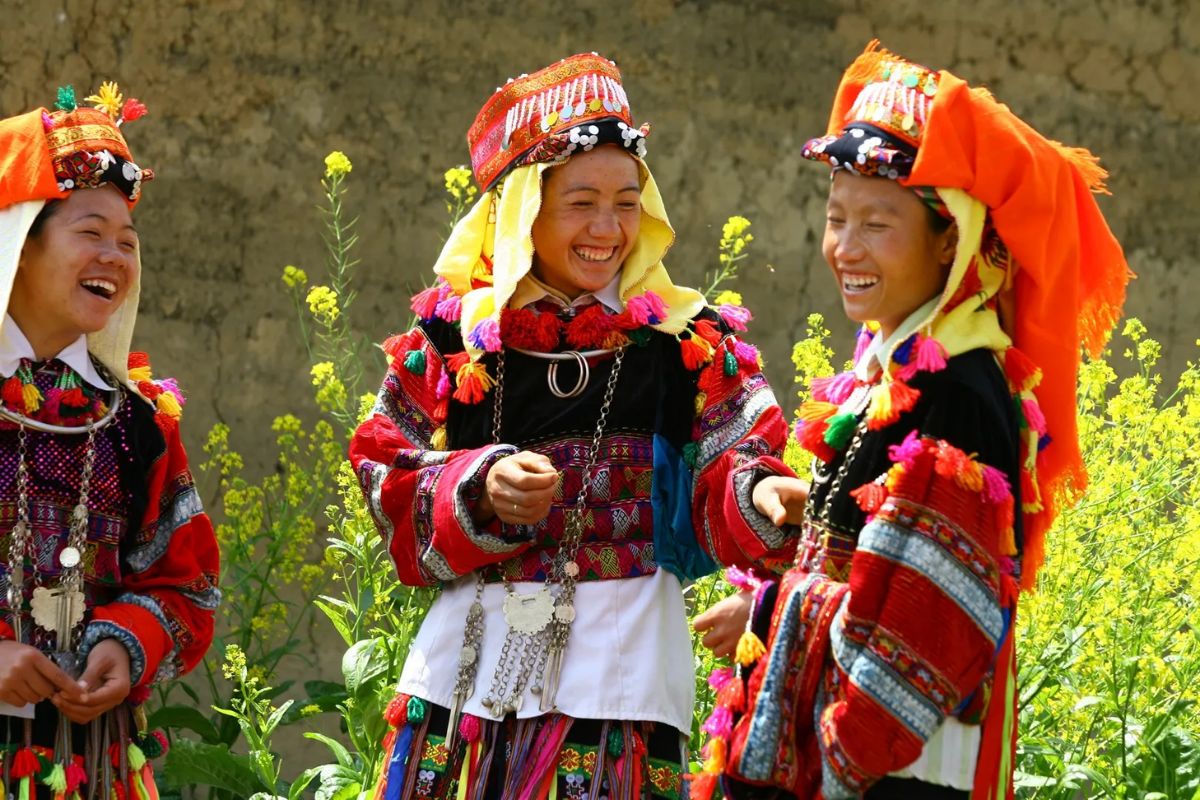
Conquering Fansipan peak
Climbing Fansipan, the highest peak in Indochina, requires careful consideration of what to wear in Sapa. The weather can be unpredictable and significantly colder at higher altitudes. Layer your clothing, starting with moisture-wicking base layers. Add a warm fleece or wool mid-layer, and top with a waterproof and windproof outer layer.
Sturdy, waterproof hiking boots with excellent ankle support are crucial. Wear thick, moisture-wicking socks to prevent blisters. Don’t forget warm accessories like a beanie, gloves, and a neck gaiter, especially if climbing in cooler months. A headlamp can be useful for early morning starts or unexpected delays.
FAQs
What should I wear to Sapa in the rainy season?
During the rainy season, it’s essential to wear quick-drying and waterproof clothing. Lightweight rain jackets, moisture-wicking shirts, and waterproof footwear are recommended.
Is it necessary to wear hiking boots in Sapa?
Yes, especially for trekking and exploring rough terrains. Hiking boots provide better support and protection compared to regular sneakers.
What should I wear to Sapa for motorbiking?
If you plan to explore Sapa by motorbike, wear long pants, a long-sleeved shirt or jacket for protection, closed-toe shoes, and don’t forget a helmet. Bring rain gear if traveling during the wet season.
Can I wear shorts in Sapa?
Shorts are suitable for warmer months, but for trekking and visiting cultural sites, long trousers are more appropriate.
—
Knowing what to wear in Sapa is essential for a comfortable and enjoyable trip. The unique climate and diverse activities require thoughtful packing, ensuring you’re prepared for everything from trekking to exploring cultural sites. With this guide, you’ll be well-equipped to enjoy all that Sapa has to offer, no matter the season or activity.
For a seamless and unforgettable experience in Sapa, consider booking your tour with Asia Encounter. Our expert guides understand the intricacies of Sapa’s climate and terrain, ensuring you’re well-prepared for every excursion. We offer tailored experiences that take you beyond the usual tourist spots, immersing you in the true essence of Sapa. From trekking through pristine landscapes to engaging with local ethnic communities, Asia Encounter provides unforgettable journeys that cater to your interests and comfort. Let us help you create memories that will last a lifetime in the stunning highlands of Sapa!

